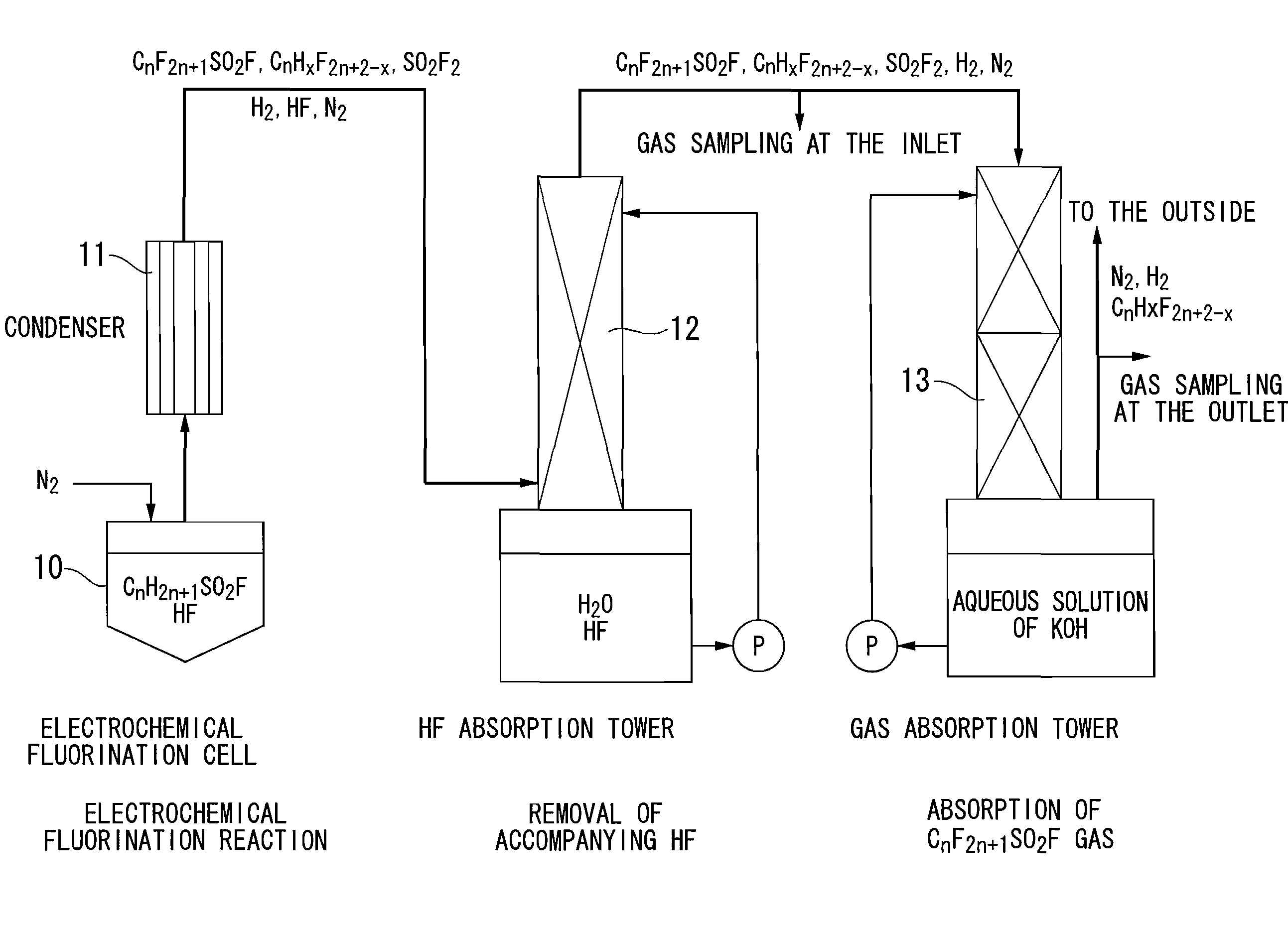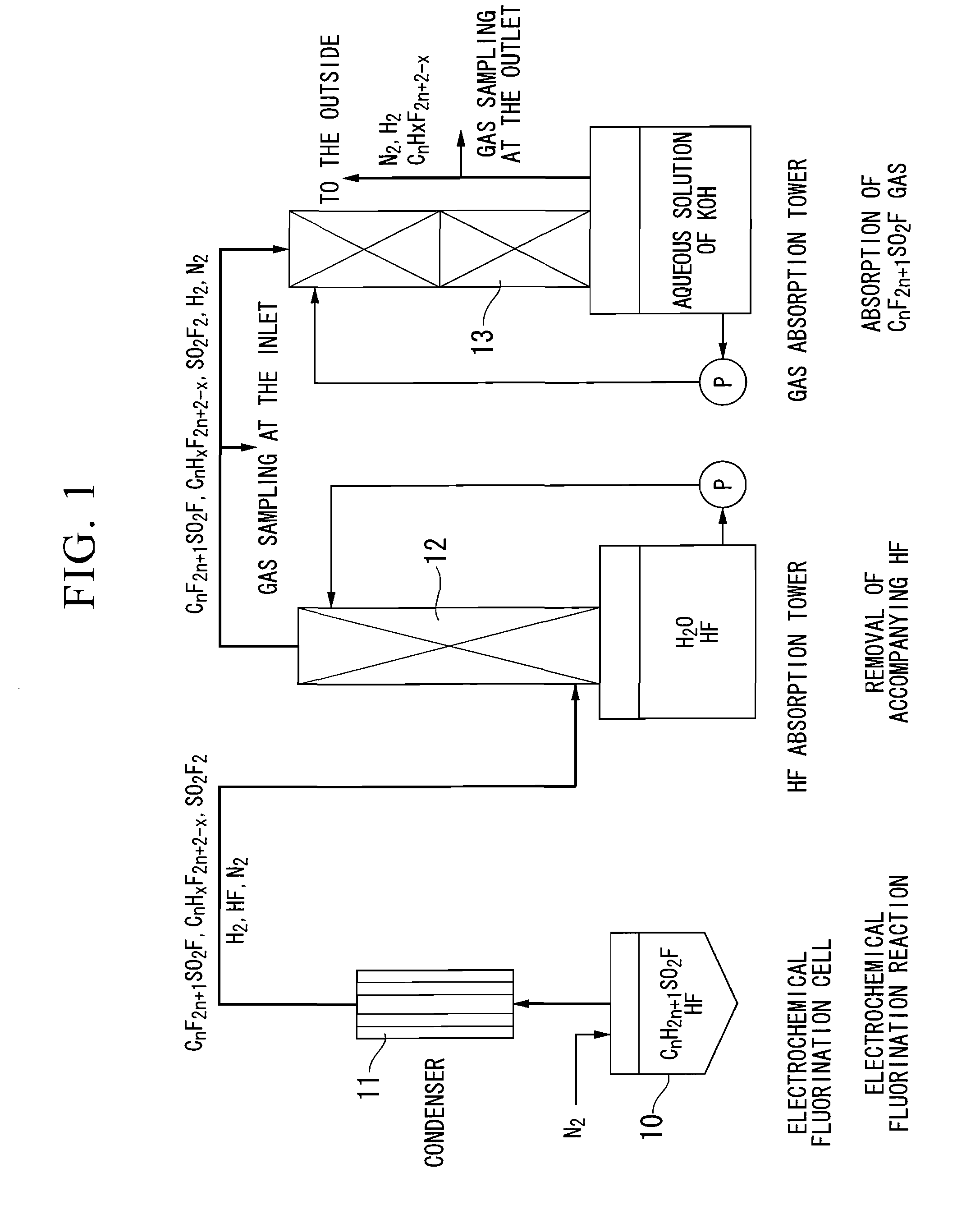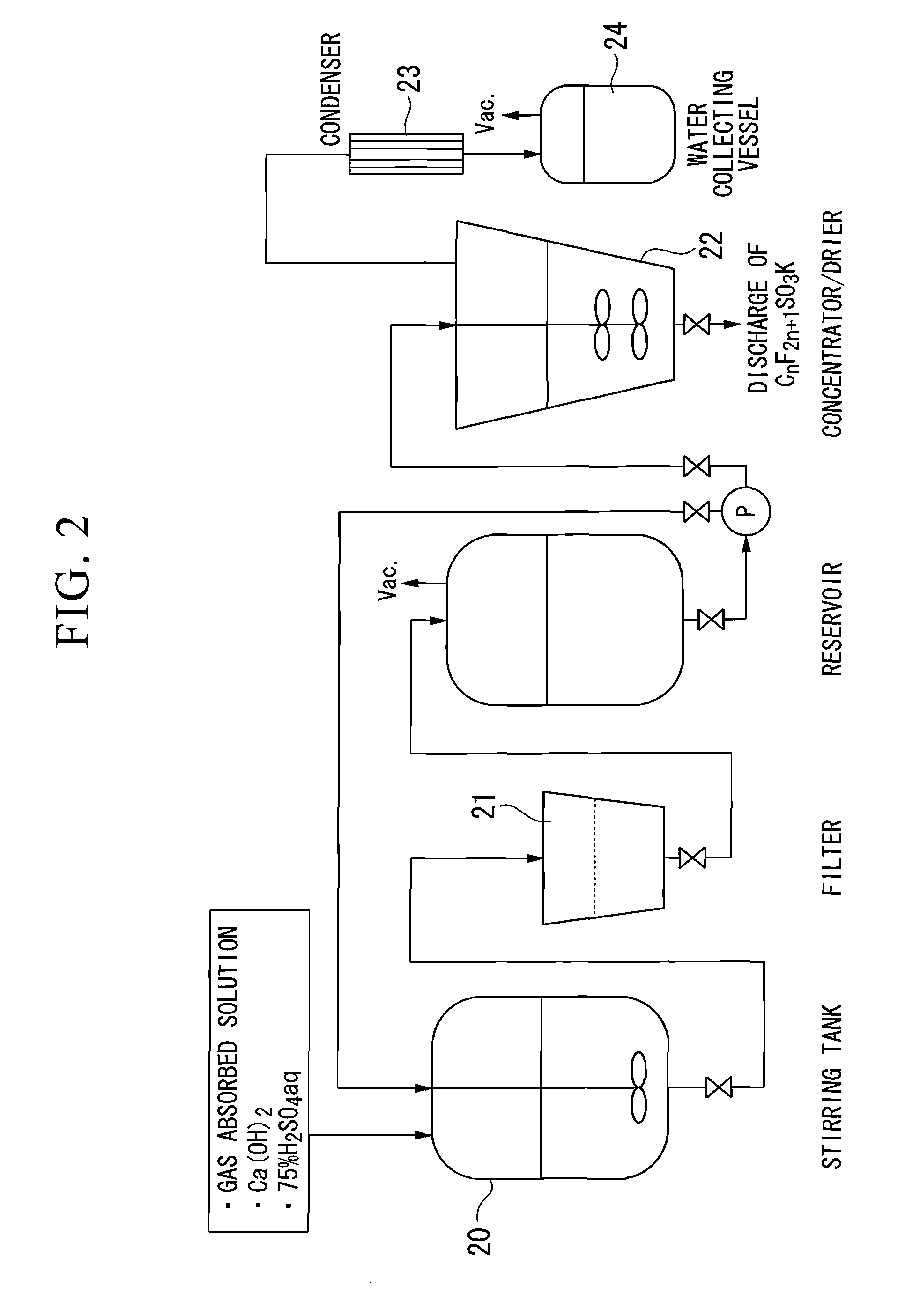Potassium perfluoroalkanesulfonate and method for producing the same
a technology of potassium perfluoroalkanesulfonate and production method, which is applied in the field of potassium perfluoroalkanesulfonate, can solve the problems of difficult removal, difficult reduction of the contents of impurities, and difficulty in processing, and achieve the effects of reducing the concentration of alkali in the gas absorbed solution, and improving the efficiency of production methods
- Summary
- Abstract
- Description
- Claims
- Application Information
AI Technical Summary
Benefits of technology
Problems solved by technology
Method used
Image
Examples
example 1
[0091]An iron electrochemical fluorination cell equipped with a reflux condenser set to −30° C. was employed and nickel electrodes having a surface area of 378 dm2 for each of the anode and the cathode were placed within the electrochemical fluorination cell. The electrochemical fluorination cell was charged with anhydrous hydrogen fluoride (84.8 kg, 4,240 mol) and the starting material, methanesulfonyl fluoride (1.73 kg, 17.6 mol), such that the proton concentration in a reaction solution was about 600 ppm, and the solution was circulated to prepare the reaction solution.
[0092]Electrochemical fluorination was performed at a constant current of 800 A while keeping the temperature to 8 to 12° C. by circulating the reaction solution through an external cooler. During the electrochemical fluorination, methanesulfonyl fluoride and anhydrous hydrogen fluoride, as required, were supplied into the electrochemical fluorination cell to supplement the reaction solution, so that the proton con...
example 2
[0097]The gas absorbed solution produced in Example 1 was placed into a fluorocarbon resin (PTFE)-lining reaction vessel. 26.2 kg (353.7 mol) of calcium hydroxide powder was added to this gas absorbed solution, and the mixture was heated to 70° C. with stirring.
[0098]After the temperature rose, stirring was continued for 2 hours to convert the dissolved potassium fluoride to calcium fluoride. Two hours later, stirring was stopped and the mixture was left to stand overnight, allowing the calcium fluoride to settle. After this aqueous solution was decanted, the calcium fluoride was removed by filtration.
[0099]75% sulfuric acid was added to the resulting filtrate until the pH reached the range of 7.0 to 7.5 (the amount of addition: 27.8 kg (212.3 mol)) and neutralization was conducted with stirring. When doing so, the temperature of the solution rose to 70° C. due to heat generation through the neutralization. Stirring was continued for 1 hour in order to complete the neutralization re...
example 3
[0101]Instead of adding a calcium hydroxide powder to the gas absorbed solution in Example 2, aluminum sulfate (21.8 kg, 63.7 mol) was added to the gas absorbed solution (267 kg) and the mixture was heated to 70° C. with stirring.
[0102]After the temperature rose, stirring was continued for 2 hours, after which stirring was stopped and the mixture was left to stand at 5° C. overnight to settle the solid. After this aqueous solution was decanted, the precipitate was removed by filtration.
[0103]The colorless and clear aqueous solution of potassium trifluoromethanesulfonate (225 kg) obtained by this filtration was subjected to concentration and drying to give 51.1 kg of potassium trifluoromethanesulfonate. Analysis of the product showed that the purity of potassium trifluoromethanesulfonate was 95.9%, the content of sulfate ions was 2.3%, the content of fluoride ions was 246 ppm, the content of chloride ions was 12 ppm, and no potassium hydroxide was detected.
PUM
| Property | Measurement | Unit |
|---|---|---|
| Temperature | aaaaa | aaaaa |
| Fraction | aaaaa | aaaaa |
| Fraction | aaaaa | aaaaa |
Abstract
Description
Claims
Application Information
 Login to View More
Login to View More - R&D
- Intellectual Property
- Life Sciences
- Materials
- Tech Scout
- Unparalleled Data Quality
- Higher Quality Content
- 60% Fewer Hallucinations
Browse by: Latest US Patents, China's latest patents, Technical Efficacy Thesaurus, Application Domain, Technology Topic, Popular Technical Reports.
© 2025 PatSnap. All rights reserved.Legal|Privacy policy|Modern Slavery Act Transparency Statement|Sitemap|About US| Contact US: help@patsnap.com



